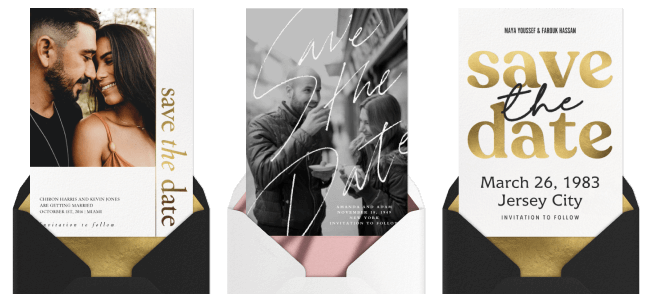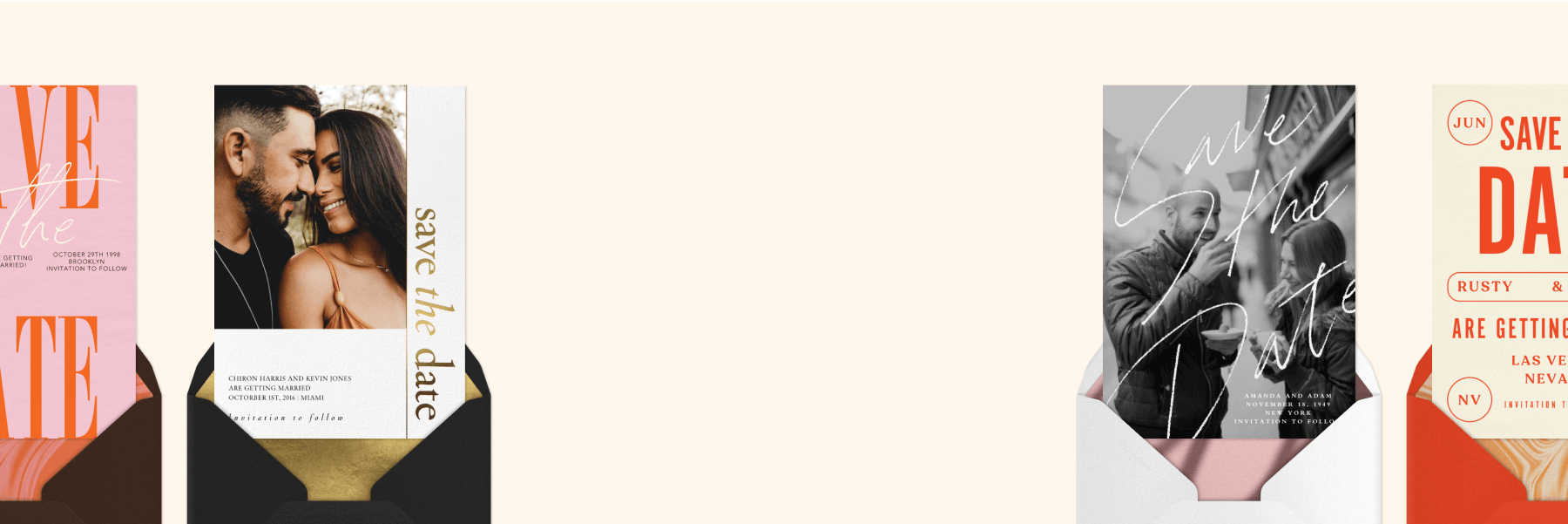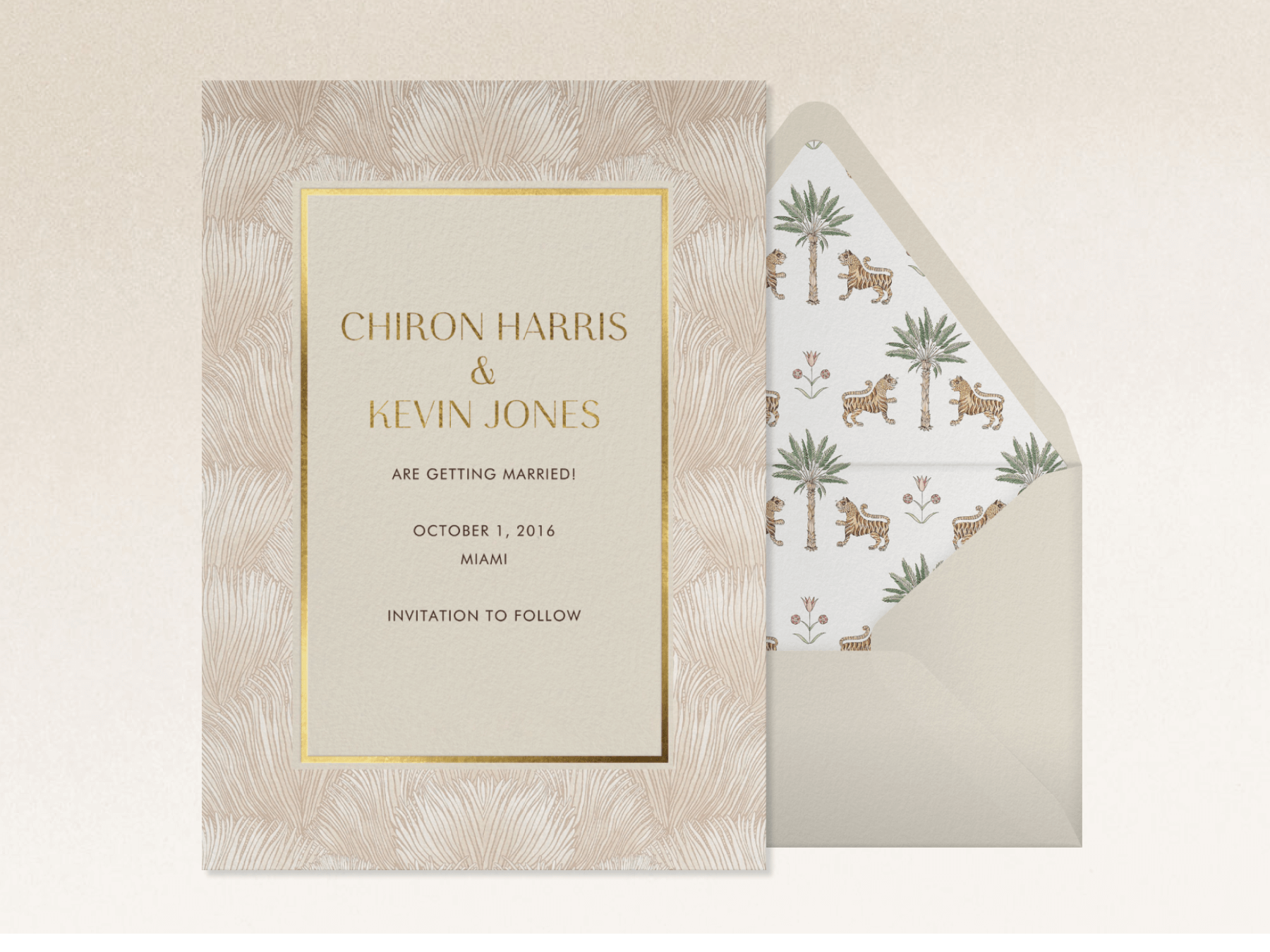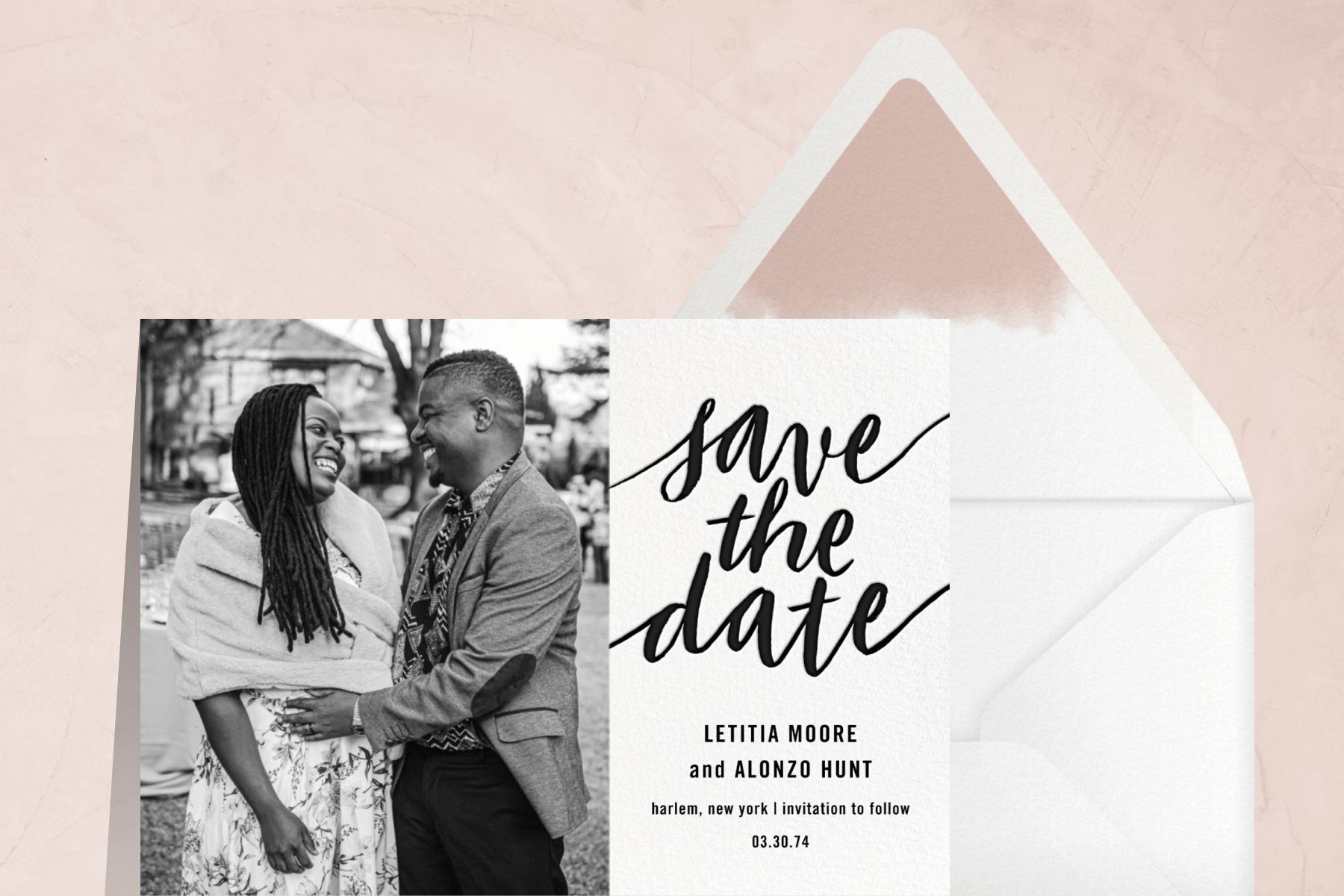When to send save the dates: etiquette and tips
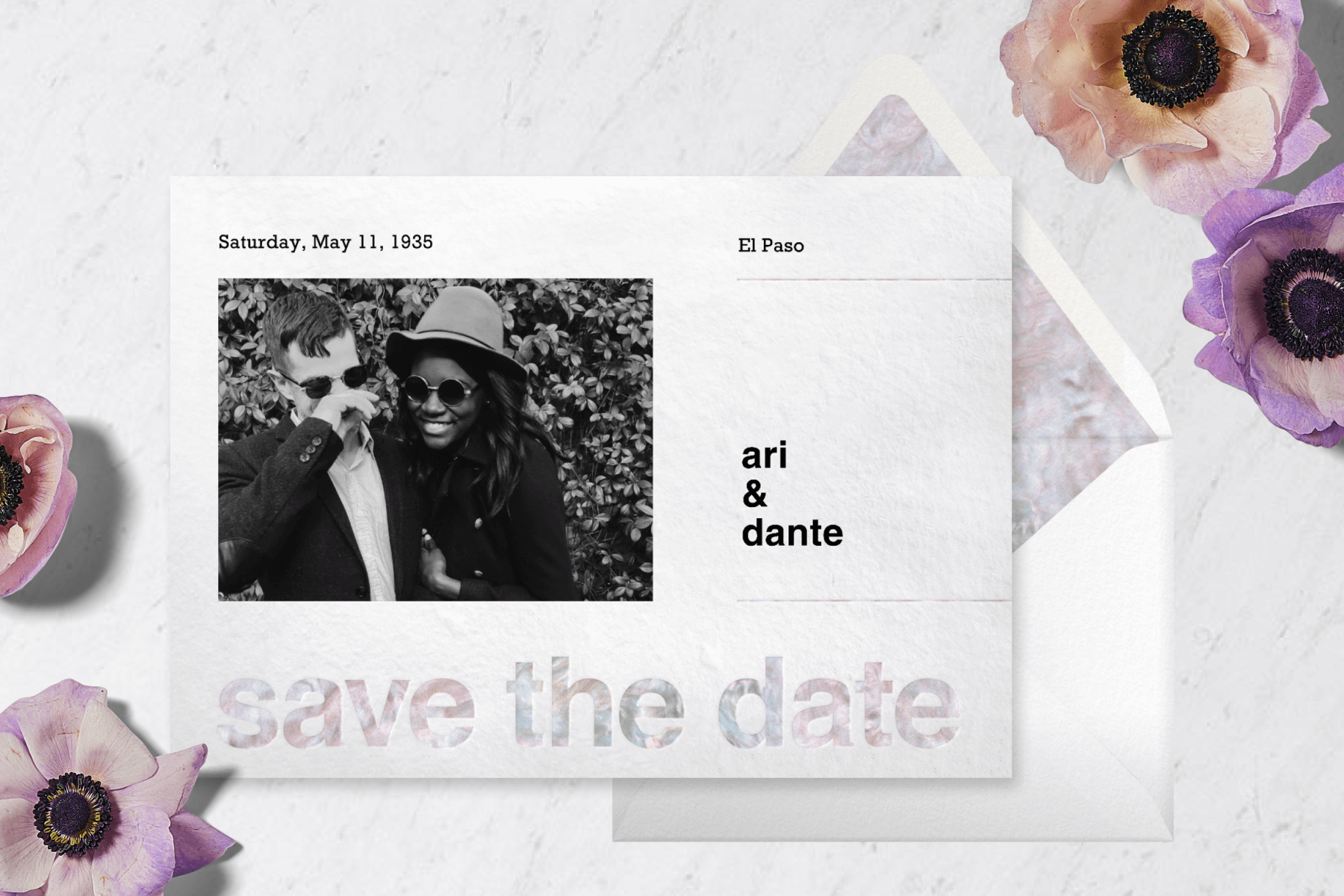
Getting married is an exciting and busy time. There’s so much planning to do, details to keep track of, and moving parts that help make it a day to remember.
One of the first steps in the wedding planning process is to share the news with your future guests. Save the dates give guests more time to put the event on their calendar, make travel arrangements, and get excited about your special day. The first wedding planning step doesn’t have to be the hardest either—we’ve rounded up all the info on when to send a save the date, who to send it to, and what to include.
Table of Contents
Is it necessary to send a save the date?
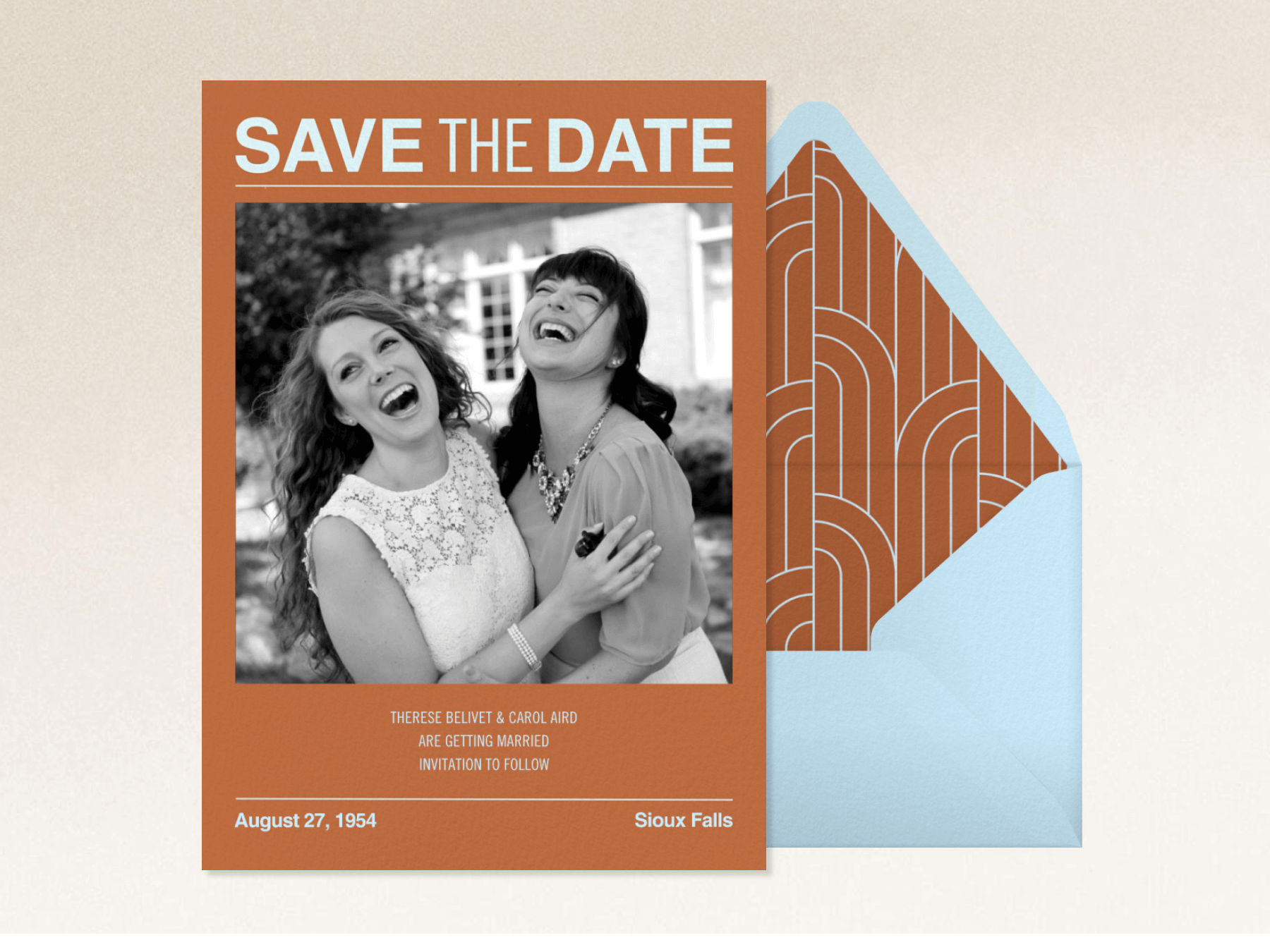 “Lead Story” by Paperless Post.
“Lead Story” by Paperless Post.
A save the date sounds the trumpets and announces your upcoming nuptials to your guests. But are save the dates necessary for every wedding?
The short answer is yes! Save the dates are highly recommended for weddings with longer planning timelines and when some or most guests are coming from out of town. They’re especially necessary for destination weddings because those events have more extensive planning requirements. Additionally, online save the dates are a convenient way to collect and confirm addresses for guests before the wedding invitations go out.
However, if you’re planning a small wedding with guests who live close by, or your planning timeline is so short that you only have time to send wedding invitations, you can probably skip the save the dates.
Save the dates vs. wedding invitations
Although save the dates and wedding invitations describe the same event, they have very different purposes.
Save the dates are shorter announcements that:
- Announce that a wedding is coming in the next year
- Include only a few details—the couple’s names, the date, and the city
- Tell guests to expect more information soon (in the invitation)
- Do not require additional information or RSVPs from guests
- Can use a Comment Wall to answer any preliminary guest questions about the wedding
- Can be in a Flyer or Card format
Wedding invitations are more elaborate and:
- Formally invite the recipient to an upcoming wedding
- Include every relevant detail: ceremony date and time, venue location, dress code, and reception information
- Serve as the last formal communication between the couple and their guests
- Ask guests to RSVP and possibly provide meal choices
- Provide registry information
- Link to a wedding website
When to send save the dates
Save the date timelines are longer than wedding invitation timelines, but the timing is still important. Sending them too early runs the risk of your guests forgetting when you’re tying the knot. It can also create problems if you need to change the date for some reason. But sending save the dates too late can create issues with guests if they have travel needs or conflicting plans.
An ideal save the date timeline for a local wedding looks like this:
- 6–12 months before the wedding: Order save the date cards you’ll send through the mail, or customize digital Paperless Post save the dates. If you are planning your wedding over a busy holiday weekend, it’s a good idea to send them out as early as possible.
- 4–6 months before the wedding: Send save the dates and begin preparing wedding invitations. Make note of any address changes and update your contact list for the wedding invitations.
- 2–3 months before the wedding: Send wedding invitations with an RSVP deadline 1 month before the wedding (or when your vendors need a headcount by).
Destination weddings require you to give guests ample notice so they can make the proper travel arrangements. These timelines are a little longer and look like this:
- 1–2 years before the wedding: Order paper save the date cards, or customize digital Paperless Post save the dates.
- 8–12 months before the wedding: Send out the save the dates. If your wedding takes place in another country, send them closer to 1 year in advance so guests can make passport and travel arrangements. Make note of any address changes and update your contact list for the wedding invitations.
- 6–8 months before the wedding: Send wedding invitations.
Save the date etiquette
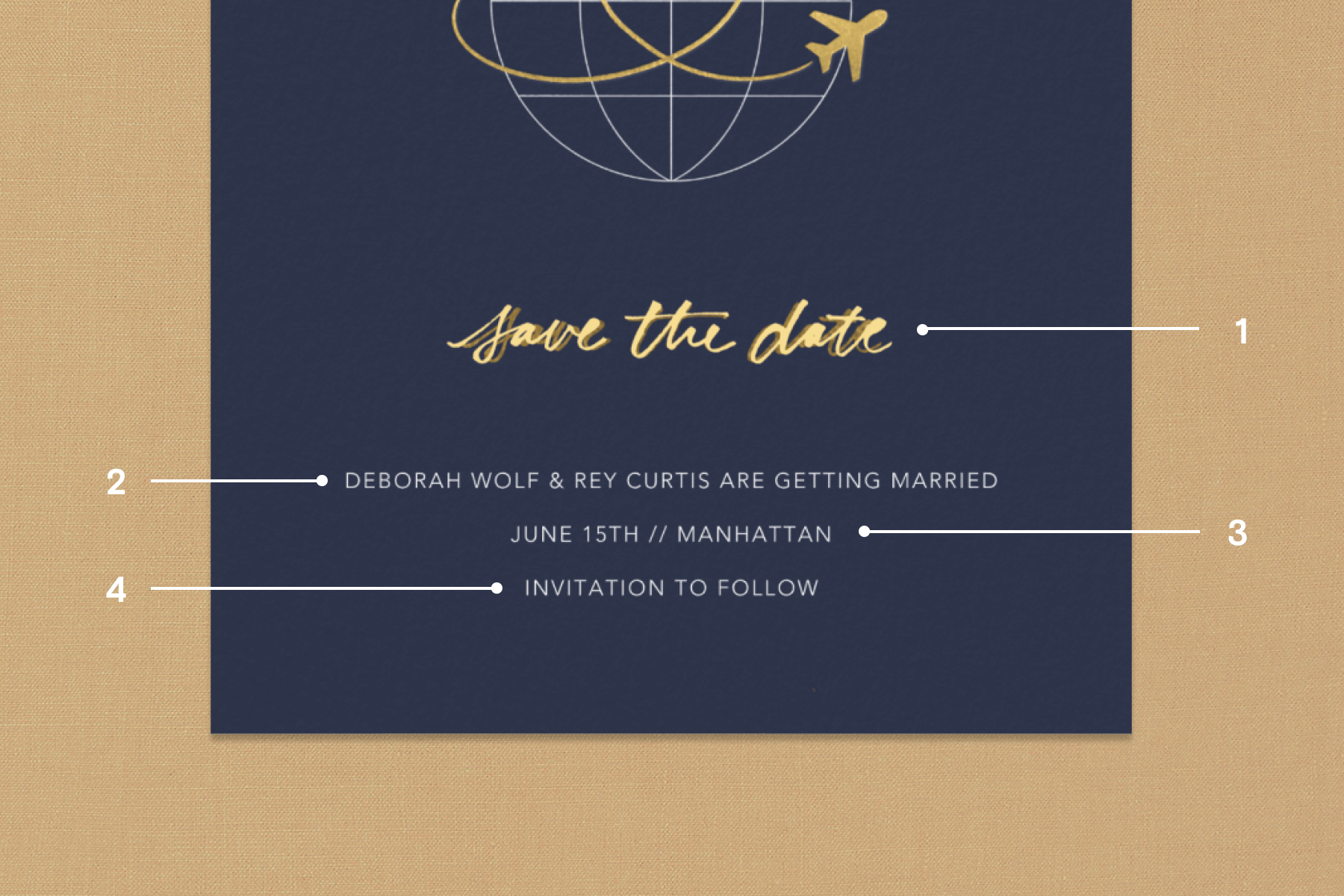 “Passport to Romance” by Paperless Post.
“Passport to Romance” by Paperless Post.
Though the tradition of sending save the dates is somewhat new, it has become increasingly popular in today’s modern culture. Since they are now more common, there are, of course, some save the date etiquette rules to follow.
Who receives a save the date card?
Save the dates should only go to the people you’re actually inviting to the wedding. If there’s anyone you’re unsure about inviting, it’s best to not send them a save the date—or send it a little later once you decide.
Should you send save the dates to people who can’t come to the wedding?
Sending save the dates to people who have already notified you they can’t attend your wedding can be seen as poor taste. Guests may view the save the date as a request for gifts or money.
However, if someone has already said they can’t attend, but would still love a save the date as a digital keepsake, feel free to send them one.
How should you address save the dates?
When you address save the dates, make it clear who you’re actually inviting. It’s important to be specific and include the names of each person. Otherwise, you’ll have guests wondering if they should bring their children or a date.
Depending on the formality of your save the date and the wedding, you can address people by:
- First and last name (Judy and Bob Smith)
- Last name only (Mr. and Mrs. Smith)
- Family name (The Smith Family)
Can you include photos on save the dates?
Photos are a great way to get guests excited about the upcoming wedding! You can also use this as an opportunity to schedule engagement photos so you can add one—or more—to your save the date photo card. Guests are much more likely to hold onto a card with your smiling faces on it!
Can you send digital save the dates?
Digital save the dates are a great option for couples who prefer electronic communication to mailing cards. Also, instant delivery means your save the dates won’t get delayed or lost in the mail, so you can be confident your guests are receiving all the information they need about your big day. You can also request that guests respond with their mailing addresses.
What goes on a save the date?
Your save the date wording only needs to have a few specifics. Stick with the basics and customize it to suit your personality and style. You can save all the other details for your wedding invitations.
Here are the basics for what to put on save the dates:
- Names: You can write out your full names or just your first names, depending on the style and tone of your save the date. Typically, the bride’s name will come first, but there’s nothing wrong with mixing up traditions if your situation is more unique. Some couples prefer to put their names in alphabetical order or list the groom’s name first.
- Date of wedding: Make the date prominent, either in numerical form or written out. There’s no need to include exact times, just the day itself. If you’re having a destination wedding or a weekend-long gathering, include all the days and specify which day the ceremony will be on.
- Wedding location: You don’t need to be specific with the venue just yet—just put a general location, like city, state, or country for destination weddings. Guests only need to know the location for planning and travel purposes. Of course, if you do have a venue booked already, feel free to add it.
- Wedding website: Use your save the date to send your wedding website to guests in case they want to know more about the specific plans and related info. You can easily include the URL for your website in a Link Block. To save even more time, you can use your Paperless Post Event Page in place of a wedding website for a seamless feel.
- Let guests know a formal invitation will follow: Add phrases like “formal invitation to follow” or “our formal invitation will follow” to indicate that exact times and ceremony locations, the gift registry, meal choices, and a way to RSVP are coming later.
Do save the dates and wedding invitations have to match?
The most important thing about save the dates is sending them on time. Matching save the date cards to the rest of your wedding stationery or invitations is a nice touch, but not worth delaying your save the date timeline.
It’s okay to try out a design on your save the date, and then later change the theme around slightly with your actual invitations. What’s important is that you have fun with your save the dates and get your guests excited about the upcoming wedding. Be creative with your save the date photo ideas, experiment with colors and fonts, and express yourself as a couple.
Save the date and invitation design ideas
Save the dates also help set the tone of the wedding, whether it’s formal, casual, destination, or retro. Let your save the date design help you tell the story of your wedding from the start.
For an array of save the date ideas, take a look at our collections of gorgeous Card designs and templates. Classic save the dates are great for announcing a stunning, traditional wedding, while modern save the dates often keep things simple and sweet. If gold is the star of your wedding palette, choose gold and metallic save the dates to hint at your shiny affair. Contrast this stylish metallic with an envelope color of your choice to round out your theme.
From save the date to “I do” with Paperless Post
Creating your own special and unique save the date card should be a fun part of the wedding planning process. Hopefully, by using these wedding save the date etiquette tips, the process will be even more enjoyable.
But our help doesn’t stop here! Find out when to host every wedding-related event, from the engagement party to the bachelorette. For inspiration on how to choose a wedding venue, check out our interview with the planners behind Mavinhouse Events. No matter which direction your wedding planning goes, Paperless Post is here to handle the organization and communication for you so you can focus on what really matters.
Secure a spot on their calendar with save the dates you can email, text, or share.